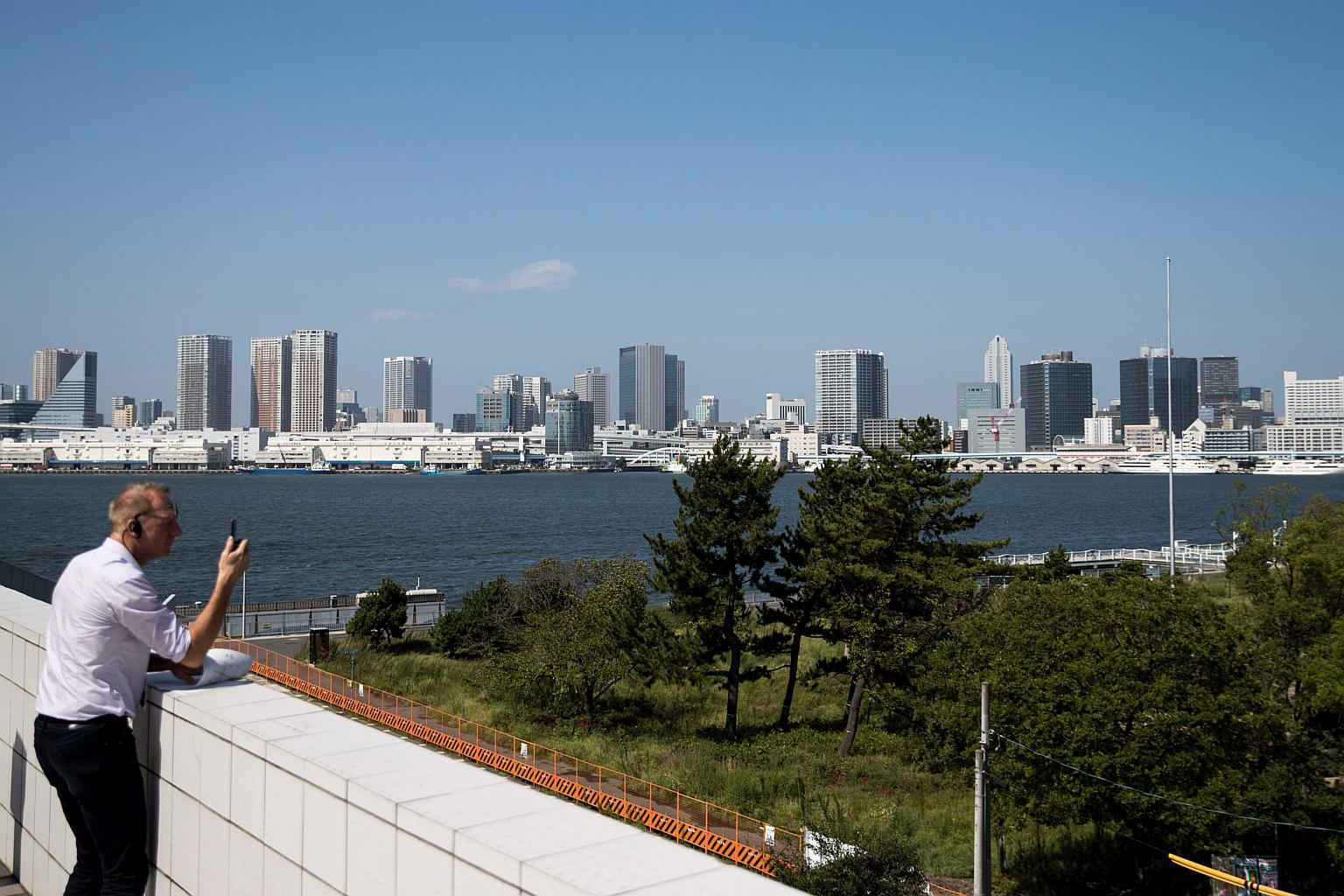Japan's Free and Open Indo-Pacific Strategy is open to all, including China, Tokyo policy forum told
Sign up now: Get insights on Asia's fast-moving developments

Japanese panellists told a policy forum that Japan's strategy was not meant to be exclusive.
PHOTO: AFP
Follow topic:
TOKYO - Japan and the United States have articulated their own vision for the Free and Open Indo-Pacific Strategy (FOIPS), but Japanese panellists told a policy forum on Thursday (Sept 13) that Japan's strategy was not meant to be exclusive.
Rather, it is a concept that all like-minded countries - including China - are more than welcome to join.
"The FOIPS is not an international organisation but it is a concept, and everybody should be welcome," said retired admiral Yoji Koda, a former commander of the Japanese naval fleet.
"If China really wants to join us and if it shares the same ideas and values, it is more than welcome on board," he added.
He was speaking at the two-day Asia-Euro Policy Forum on Responding to Crises in East Asia, which ended on Thursday.
Japan has of late been cautious about positioning the strategy as a means of containing China - unlike the US, which has been more overt in its intentions. This comes as their frosty ties are thawing with Prime Minister Shinzo Abe set to make a landmark visit to Beijing next month for a summit with President Xi Jinping.
Even so, there have been global concerns - not just in Asean and the US but also in Japan's traditional partners such as Australia and the European Union - over freedom of navigation in the South China Sea, given China's increasing military expansionism in the waterway.
But Dr Amy Searight, director of the South-east Asia Program at the Centre for Strategic and International Studies in the US, said Washington's FOIPS is "flawed because it has no buy-in from the top".
She noted that US President Donald Trump would not be attending the summits in Asia in November, in a blow to the credibility of the strategy.
Japanese Foreign Minister Taro Kono had said in an interview with The Straits Times last month that Asean is at the heart of Japan's FOIPS, which seeks to promote rule of law at sea and build high-quality infrastructure in areas across the Indian and Pacific oceans.
Mr Toshihide Ando, deputy director-general for Asian and Oceania Affairs at Japan's Foreign Ministry, said yesterday: "There has been some misunderstanding about the strategy but I can assure you that Asean sits right in the centre of the Indo-Pacific and Asean is centre to this concept."
He noted there are already several concrete projects established under the strategy, including projects to build ports, railways and airports in the region.
The FOIPS dovetails with China's Belt and Road Initiative in their respective visions to boost connectivity through the region, and there has been talk that Mr Abe and Mr Xi might ink agreements next month to cooperate on infrastructure projects in third-party countries.
A high-speed railway project in Thailand is seen as the prime candidate for their collaboration.
Asean has served as the theatre for Sino-Japanese rivalry in recent years, especially amid frosty ties between the two countries, but Asean could yet benefit from the warming outlook between the neighbours.
"Asean countries are saying, 'I have two very rich godfathers, how can I ask them to come together to give them the respective presents'," veteran Singaporean diplomat Ong Keng Yong quipped at the forum.
"This takes time, because it requires matching of different competing interests, but we will try," he said.
"The good thing is with (international finance institutions such as) the Asian Development Bank and World Bank, we can get together on their platform and can find something together."

